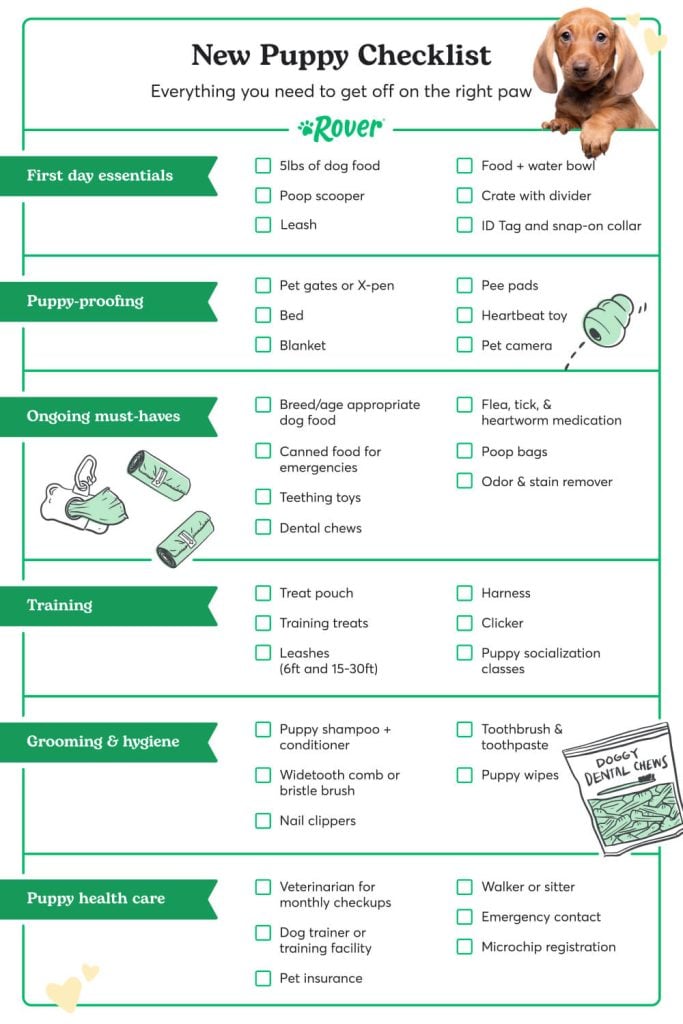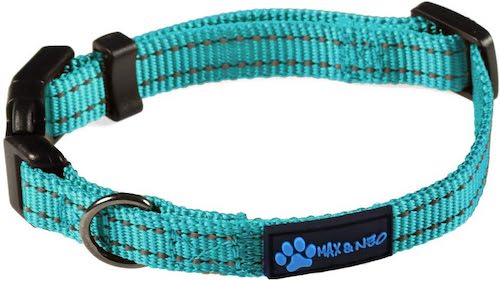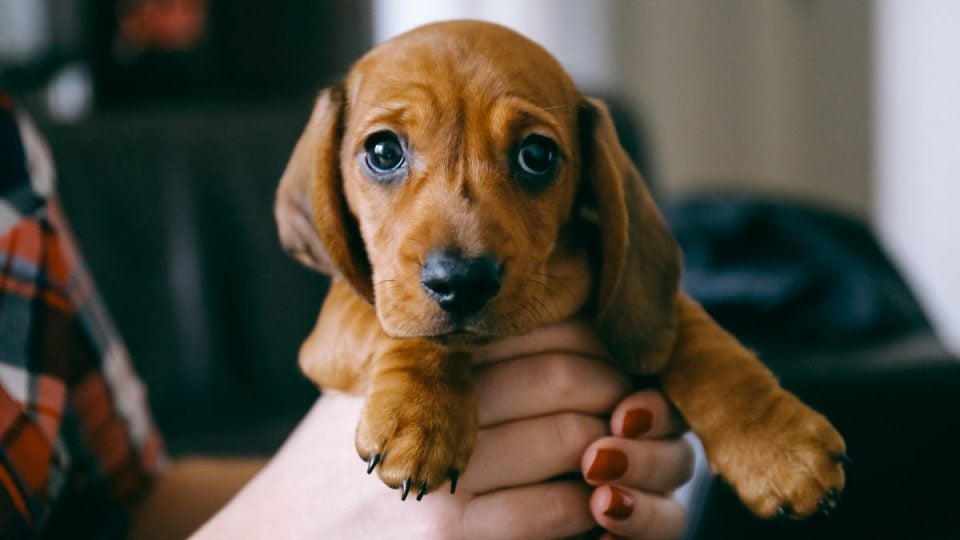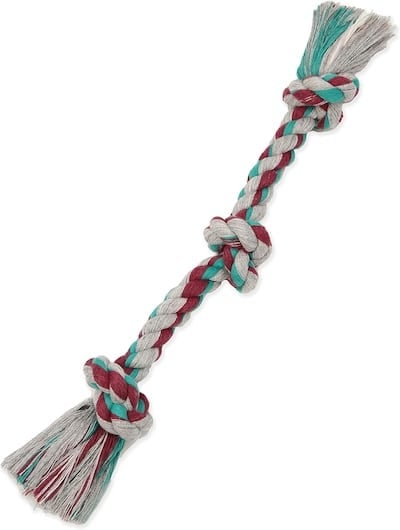- This review contains affiliate links. Read more here.
- Not a substitute for professional veterinary help.
Congratulations on welcoming a new puppy into your home! For a smooth transition, you’ll want to have some puppy supplies ahead of time. But what’s truly necessary, and what’s just extra?
To guide you through the essentials, we’ve gathered insights from several experienced veterinarians and a force-free trainer. This list covers everything your puppy needs, from training gear and toys to veterinary and grooming services.
Read on to get the ultimate scoop and start ticking off those boxes.
Printable Checklist

Pup Team
It takes a village to raise and care for a new puppy. Enlisting trusted professionals will help you with your puppy’s health and well-being. Here are some ideas for who to include in your pup team.
Vet
A check-up will be one of the first things on your new pup’s to-do list, and it can take some time to find a vet you like and trust. It’s wise to explore your options before you bring your puppy home so you can find a vet who suits your needs and budget.
If you have other pets, you likely already have a vet on speed dial. If not, research local clinics and ask friends or neighbors for recommendations. When evaluating potential vets, consider their knowledge of both traditional and holistic approaches, clinic hours, and proximity to your home. A vet who shares your values will also make you (and your pup) feel at ease.
Trainer or training class
If this is your first time raising a puppy, it’s not a bad idea to find a dog trainer, too. Even if your pup seems to be doing well, a trainer can help you understand their body language and keep both of you safe.
Puppy classes can be a great way for your new friend to learn everything from basic obedience to how to interact with other dogs. Aryel Lafleur, a force-free trainer and spokesperson for Earth Rated, says that working with a qualified professional can also help prevent common challenges like excessive barking, leash pulling, and jumping on guests.
Choosing the right trainer is key to your puppy’s success. Start by asking about their training methods—look for someone who emphasizes positive, science-based approaches rather than punishment. Checking referrals and reviews from other clients can provide valuable insights into their effectiveness and style.
Sitter/walker
It’s easy to forget your puppy can’t go everywhere with you until that first impromptu weekend getaway. Since new puppies can’t be left alone for long, you’ll want an experienced sitter lined up. Consider a professional walker, too—they can ensure your pup gets the necessary exercise and potty breaks, even on the busiest days. This support is invaluable when the “puppy blues” hit and you’re completely overwhelmed.
When choosing a sitter, make sure their pet care philosophy aligns with yours—that includes sleeping arrangements and rules about pets on furniture. Additionally, think about your evolving needs. A sitter who offers a variety of services—like boarding, doggy daycare, and drop-in visits—can cover all your bases.
Groomer
Some dog breeds require regular professional grooming due to their coat types, such as long-haired or curly breeds. Others may benefit from services like nail trimming or ear cleaning, which groomers are trained to handle.
When choosing a groomer, start by seeking recommendations from fellow pet parents to find trustworthy professionals. It’s important to understand their qualifications: ask if they are licensed, what training they have completed, and their experience with various dog breeds. Fear-free certification is ideal.
Paperwork
Next up on your puppy supplies list: paperwork. While it’s probably one of the least exciting things about puppyhood, it’s essential to have all your ducks in a row. Here are a few things to sort out when bringing a new pup home.
Microchip
A pet microchip is a tiny electronic device, about the size of a grain of rice, that’s implanted just beneath your dog’s skin. This permanent form of identification makes it easier to reunite if they wander off. Some rescues and breeders already microchip puppies before they’re adopted. Just be sure to transfer the registration to your name and verify that your contact details are accurate.
Registration
Dog licensing involves submitting an application and paying a fee to local authorities, typically at the city or county level. Licensing requirements vary by location, and failing to register can lead to fines or legal issues. Most states require dog guardians to obtain a license within a specific timeframe, usually 30 days.
Pet insurance
Although it might not be the first thing on your mind, Dr. Mathieu Glassman, a veterinary surgeon and founder of Dr. Cuddles, recommends getting pet insurance—even before a new puppy’s first vet visit. The younger your pup is when you get a policy, the more likely it is that treatments for health problems down the road will be covered (and not denied as pre-existing conditions). Plus, it’s always nice to have a safety net for any puppy adventures that go awry.
Walking Supplies

Max & Neo Nylon Collar
With sizes starting at 8.5 inches, this lightweight and comfy collar is ideal for pups getting used to wearing gear.
Let’s be real. Teaching your puppy how to walk nicely on a leash isn’t always, well, a walk in the park. Having quality gear, however, like a good leash, collar, and harness, can help!
Leash
Selecting the right leash is crucial for effective training and control, as different breeds come with their own sizes and energy levels. A lightweight leash is ideal for smaller breeds, while larger breeds require a strong, durable option.
A standard 6-foot nylon leash is perfect for most puppies in training, providing freedom for your pup to explore while keeping them close enough for guidance. For exercise, recall training, and sniffy walks, consider also investing in a good quality long line.
Collar with ID tags
Your puppy needs a well-fitting collar to hold their ID tags. Traditional flat collars with buckles are a good starting point, as they’re user-friendly and comfortable. Look for a collar made from soft, lightweight materials to prevent skin irritation. It should be adjustable, too, since your puppy will grow quickly!
Harness
Choosing the right harness can lead to safer, more enjoyable walks. Ultimately, the best puppy harness will be comfortable, easy to put on, and adjustable as your puppy grows.
Smaller breeds need a lightweight harness that won’t overwhelm their petite frame. Simple mesh or step-in harnesses are good options. Larger or more energetic breeds need more robust harnesses with additional padding and support. Also consider your puppy’s tendency to pull and their body proportions.
Potty Supplies
Potty training your puppy is a journey that requires patience—and the right tools. Here are some supplies that can make the process easier.
Pee pads
Housetraining doesn’t happen overnight, and puppy pads can be invaluable while it’s ongoing. These absorbent pads provide a designated area for your puppy to relieve themselves. They’re particularly helpful for guardians who work long hours, live in apartments without easy access to outdoor spaces, or want to protect floors during training.
However, it’s important to remember that puppy pads are best used short-term. Prolonged use may lead to confusion about appropriate potty areas, potentially slowing down the training process.
Poop bags
Every dog parent needs a stash of reliable poop bags. Look for bags that are easy to open, large enough to handle substantial droppings, and effective at locking in odors.
Poop bag holder
A poop bag holder ensures waste bags are always at the ready. They come in various styles, from compact holders that clip onto leashes to larger pouches designed to hold all your walking essentials.
Enzymatic cleaner
Accidents happen, but they don’t have to ruin the carpet or furniture. There’s a wide array of safe cleaning products that can help. Enzymatic cleaners use non-pathogenic bacteria to effectively break down organic waste like urine and feces. A multi-purpose cleaner that works on different surfaces and types of stains is always good to have on standby. Nature’s Miracle is a good option that’s effective on urine, poop, and vomit.
Food and Treats
Kibble, treats, chews, bowls—there are quite a few things to tick off in this category. Here’s some helpful insight as you make your way down the food section of your puppy supplies checklist.
Food and water bowls
All puppies need food and water dishes, and some may benefit from special dog bowls that accommodate their size, eating style, or even medical needs. In addition to standard dog dishes, you’ll also find elevated dog bowls, travel bowls, and slow feeders.
Stainless steel and ceramic bowls are ideal choices—they’re durable, non-porous, and resistant to bacteria growth, unlike plastic.
Food
Because puppies have different nutritional needs than full-grown dogs, you’ll want to buy puppy food specifically formulated for young dogs. Always check the label to ensure the food adheres to AAFCO guidelines for the “growth stage” or “all life stages.”
Small-breed puppies need calorie-dense food with smaller kibble, while large-breed puppies need controlled calcium and phosphorus levels for an optimal growth rate. Always consult your veterinarian for personalized recommendations.
Treats
When it comes to treats, having a small assortment keeps things fresh and helps you discover your puppy’s favorite flavors. Training treats are a little different from normal puppy treats. They’re meant to be “high value”—something your pup will really love—so they can serve as an incentive to learn. Look for treats that are stinky, squishy, and soft. Freeze-dried treats are also a hit with most dogs.
Chews
Puppies chomp on everything. Giving them edible chews provides much-needed enrichment and redirects them from gnawing on less desirable items, like your slippers.
Choose chews that are appropriate for your puppy’s size and chewing habits. Strong-jawed pups, especially larger breeds, may require more durable options to avoid choking hazards, while smaller breeds benefit from softer, pliable chews. Dental chews, like the ever-popular Greenies, are great for removing plaque and freshening doggy breath.
Food storage
Puppies are notorious for getting into everything, so having puppy-proof food storage is a smart move. A sound storage system keeps food fresh and maintains its nutritional quality.
For dry kibble, opt for an airtight container that wards off moisture and pests. Fresh or wet food can be stored in glass or BPA-free plastic containers with tight lids. If you have a growing giant on your hands, make sure the container can keep up with their increasing appetite!
Treat pouch
When training or walking your puppy, your hands will be full! A convenient treat pouch that easily attaches to your belt or bag keeps treats, poop bags, and training clickers within reach. This way, you can effortlessly reward good behavior on the spot.
Home
Some of the best supplies you can buy your puppy will be items that transform your home into a comfortable, safe haven, helping them to adjust better. Here are some new puppy supplies that can help them feel at home.
A crate
A good puppy crate serves multiple purposes: It provides a secure space for your pup when you can’t supervise them, helps with potty training, and offers a cozy, private space that can reduce anxiety.
When choosing a crate, factor in your puppy’s future size and opt for models with adjustable dividers to accommodate their growth—comfort is key! LaFleur suggests enhancing the crate’s appeal with soft bedding and tossing in some engaging toys. This way, your puppy won’t just see the crate as confinement; it will become their personal sanctuary.
Bed and blanket
Just like us, puppies need a cozy spot to unwind. A good puppy bed supports their growing bodies and prevents joint issues down the line. Paired with a warm, cozy dog blanket, it can make your puppy feel right at home in their new environment.
Pen or gate
According to Dr. Ostermeier, puppy gates are often overlooked. But they’re incredibly useful for potty training and puppy-proofing your home. You can block off-limits spaces with a puppy playpen or strategically placed dog gates. Prioritize sturdy, chew-resistant gates or pens to withstand your puppy’s adventurous spirit. Also, consider your living space and your puppy’s size.
Toys
Every puppy needs to play, whether it’s chasing a ball or chomping on their favorite chew toy.
To avoid accumulating a pile of toys your puppy ignores, Dr. Glassman suggests starting with a few essentials: chew toys, a couple of balls, and some plush toys. As you discover your puppy’s preferences and play style, you can expand their toy collection. Here are some great options to get you started.
Plush toys
For puppies who love to cuddle, plush toys can be comforting. And they’re a lot of fun for your new dog, especially when a squeaker is involved. These toys are ideal for gentle indoor play.
When choosing a plush toy, size matters—small breeds will enjoy toys they can easily carry, while larger breeds need something more robust. For rowdier pups, look for reinforced seams and toys without stuffing, like Outward Hound’s stuffing-free Durablez line.
Chew
Durable chew toys satisfy your puppy’s urge to gnaw while keeping them entertained and protecting your belongings.
Choose chew toys based on your puppy’s size and chewing habits (if you’re familiar with them) to minimize choking risks. Materials like nylon and hard rubber hold up well to vigorous chewing. A variety of chew textures keep puppies engaged.
Chase
Have a lively pup that needs a lot of exercise? Chase toys are a fun way to burn excess energy. Choose from fetch sticks, rope toys, flirt poles, and tennis balls. These toys encourage your puppy to run, jump, and play.
When selecting chase toys, consider your puppy’s size and athleticism. Lightweight toys suit smaller pups, while larger breeds may need sturdier options to withstand their strength and enthusiasm.
Heartbeat toys
Heartbeat toys are plush companions designed to comfort puppies by mimicking the soothing presence of their mother and littermates. Equipped with a gentle pulsing mechanism and warming feature, these toys provide a sense of security.
While not every puppy will take to them, many pet parents find them invaluable for calming anxious pups when transitioning to their new home.
Puzzle toys
Puzzle toys are a fun way to keep puppies entertained and mentally engaged. They can also ease help anxiety and develop your puppy’s problem-solving skills. Puzzle toys come in various styles and difficulty levels, so you can find one that suits your puppy’s skills and experience.
Grooming
Grooming is essential to your puppy’s overall health. Here are some useful items for keeping your pup so fresh and so clean (clean).
Puppy shampoo
Plan to bathe your puppy regularly—and when you do, remember to use puppy shampoo. Human shampoo isn’t safe for dogs, so always stick to puppy-specific products. These formulas will be gentle and provide hydration without harsh chemicals.
Towels
Stock up on absorbent dog towels for those inevitable messy moments. Quick-drying towels that resist odors are perfect for drying off after a bath or cleaning paws after a rainy walk. We also recommend leaving one in the car for clean-ups on the road.
Pet wipes
Pet wipes are a lifesaver for quick clean-ups between baths. They tackle minor messes, keeping your puppy fresh after trips to the beach or while traveling. Just make sure you’re reaching for pet-specific wipes, which are gentle enough for delicate puppy skin.
Puppy brush
Even if your puppy isn’t a heavy shedder, regular brushing is a must. Choosing the right puppy brush comes down to your pup’s coat type and length. For example, rubber curry or bristle brushes work wonders on short-haired breeds, while slicker brushes are perfect for medium to long fur.
Wiry coats and curly coats also benefit from a good slicker brush. If your puppy has a double coat, like a German Shepherd or Pomeranian, you’ll need an undercoat rake to remove it.
Toothbrush
Dental care is vital for puppies. And the earlier you start with teeth brushing, the better, says Dr. Johnson.
Introduce brushing gently with a soft-bristled, dog-specific toothbrush. Look for one endorsed by the Veterinary Oral Health Council (VOHC). If your pup is hesitant, a finger brush can gently ease them into the routine.
Toothpaste
Never use human toothpaste on your puppy. Instead, opt for a non-toxic, pet-safe formula. Dog toothpastes use mild abrasives and plaque-fighting enzymes to tackle tartar and bad breath. They even come in dog-approved flavors like seafood and poultry to make them more appealing.
Nail clippers
Overgrown nails can cause discomfort and inhibit movement, so regularly trimming them is crucial. You don’t want to use human nail clippers, as these can damage your pup’s nails. Instead, choose nail clippers that suit your puppy’s paw size.
Scissor-style clippers are ideal for small breeds, while guillotine clippers can handle larger nails and offer a quick, clean cut. Don’t forget about nail grinders if your puppy is anxious—these tools gently smooth the nails without the risk of cutting too close.
Final Thoughts
The first few months with your new puppy can be some of the most fun, exciting, and joyful of your life—if you’re ready. And with this new puppy checklist, you’re more than prepared to welcome them into your family—so go and enjoy your new puppy!











